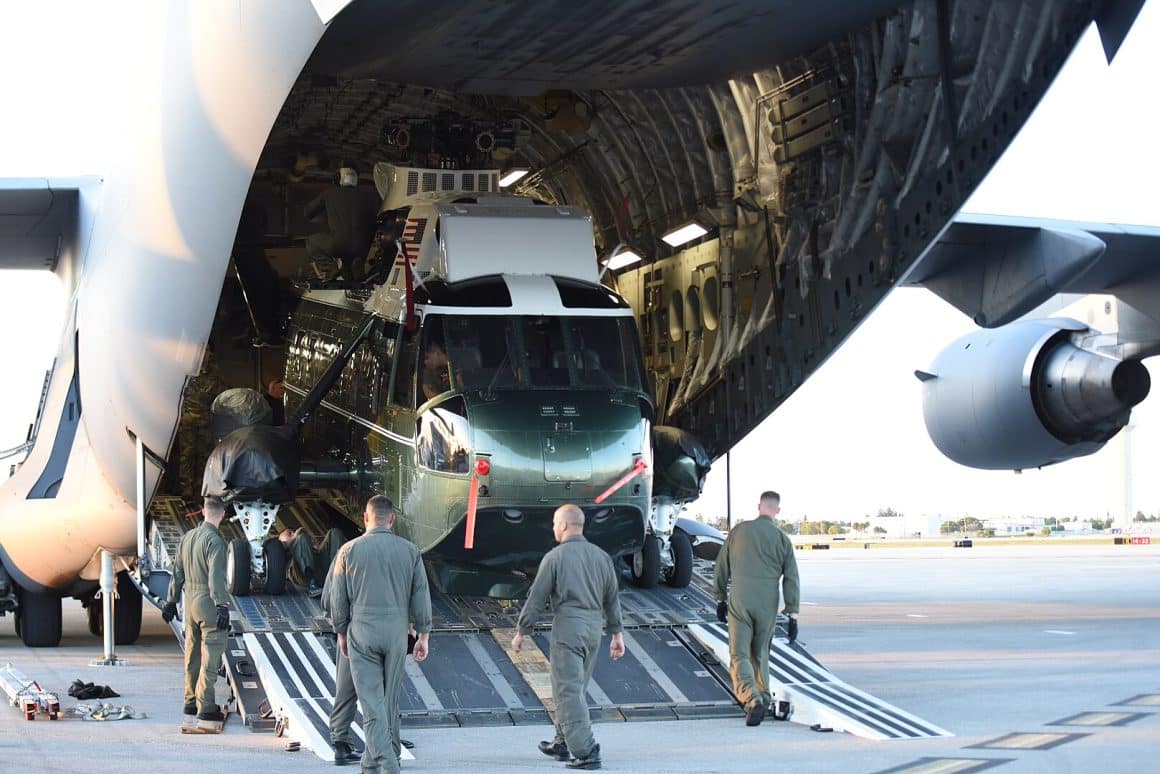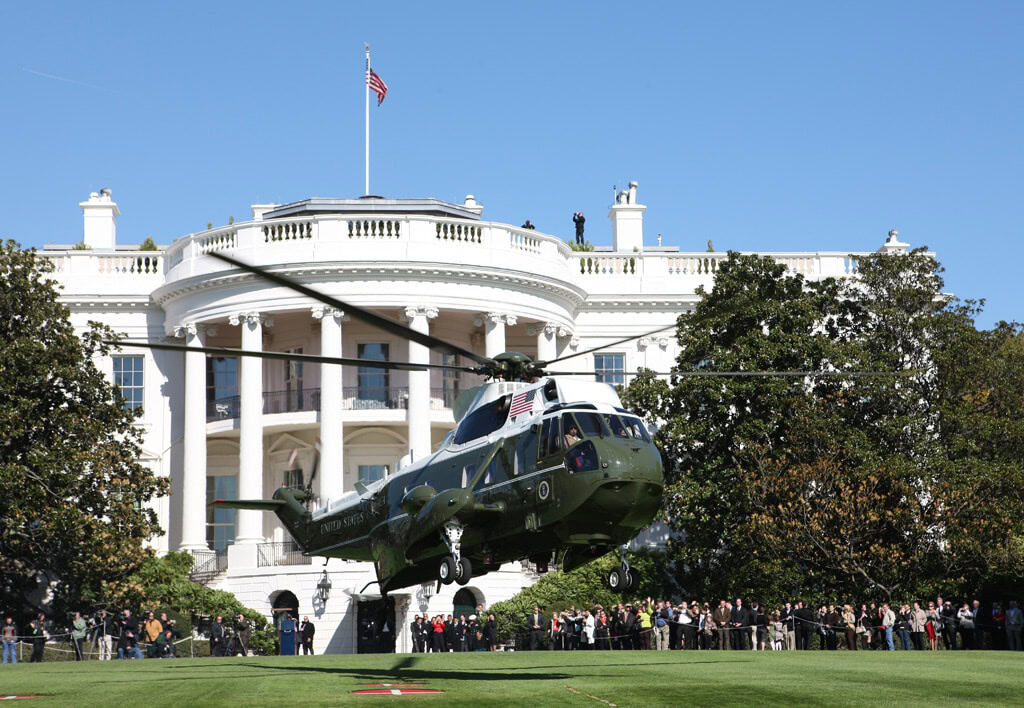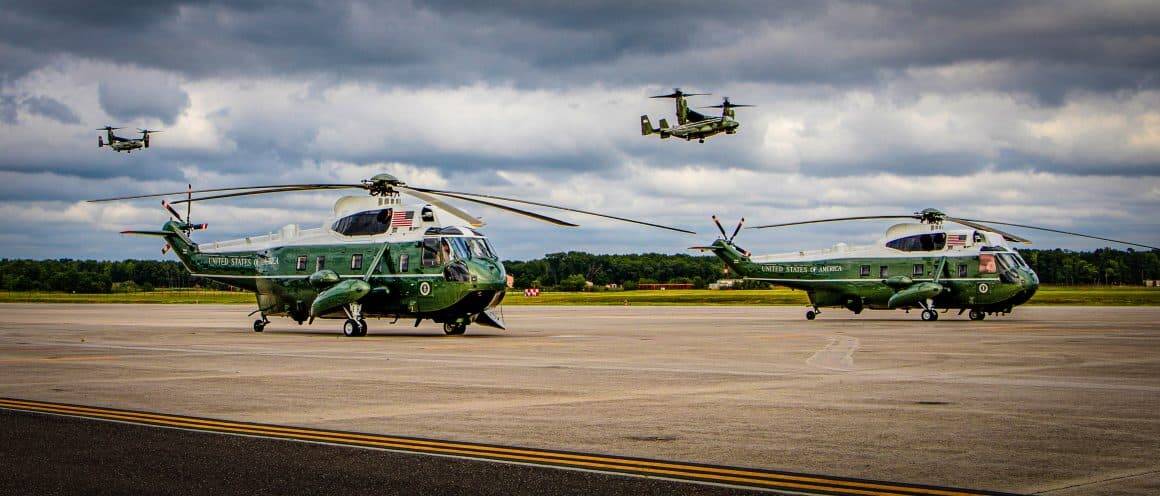Marine One executed an emergency landing at a local airfield in England on Thursday, 18 September, delaying President Donald Trump and First Lady Melania Trump’s departure from the United Kingdom by about 20 minutes.
The incident occurred as the presidential helicopter departed Chequers, the country residence of UK Prime Minister Keir Starmer, following a joint press conference. The helicopter was en route to London Stansted Airport (STN), approximately 64 miles northeast, where Air Force One awaited for the return flight to Washington, D.C.
White House Press Secretary Karoline Leavitt confirmed the details in a statement.
“Due to a minor hydraulic issue, and out of an abundance of caution, the pilots landed at a local airfield before reaching Stansted Airport, where Air Force One was waiting to take them back to Washington,” Leavitt said. “The president and first lady safely boarded the support helicopter.”
Due to a minor hydraulic issue, and out of an abundance of caution, the pilots landed at a local airfield before reaching Stansted Airport.
White House Press Secretary Karoline Leavitt
The Trumps transferred to a backup helicopter and completed the short hop to STN without further incident, boarding Air Force One shortly after the 20-minute delay.
Stansted, located 42 miles northeast of central London, serves as a preferred gateway for foreign dignitaries visiting the UK. Its expansive facilities and position outside the crowded airspace of Heathrow (LHR) and Gatwick (LGW) provide operational flexibility for high-profile arrivals and departures.
Marine One: Presidential Rotary Transport Abroad

Marine One designates any US Marine Corps helicopter carrying the president, primarily operated by Marine Helicopter Squadron One (HMX-1) “Nighthawks” from Marine Corps Air Facility Quantico, Virginia. The current fleet includes the Sikorsky VH-3D Sea King, VH-60N White Hawk, and the newer VH-92A Patriot, all featuring the distinctive “White Top” livery.
These helicopters do not fly overseas routes independently. With a range of about 450 miles and top speeds around 160 mph, models like the VH-3D are suited for short- to medium-haul missions, such as White House-to-Camp David transfers. For overseas travel, the aircraft are disassembled and transported aboard US Air Force airlifters, including the C-17 Globemaster III or C-5M Super Galaxy. HMX-1 crews then reassemble and test them on site, deploying with backup units and maintenance support.
The squadron maintains 35 helicopters across four types (the three listed earlier, plus MV-22 Ospreys, which are very rarely used for presidential transport), crewed by more than 800 Marines. Operations emphasize security, with formations of up to five identical aircraft serving as decoys, plus countermeasures like chaff, flares, and infrared jammers. Every personnel involved undergoes Yankee White clearance.
Marine One’s Fleet History and Evolution

Presidential helicopter transport began in 1957 with President Dwight D. Eisenhower using a Bell UH-13J Sioux for a short trip to his Pennsylvania summer home. The Sikorsky H-34 followed in 1958, replaced by the VH-3A in 1961. The VH-3D entered service in 1978, joined by the VH-60N in 1987.
Post-9/11 security demands prompted the VXX replacement program. After the 2009 cancellation of Lockheed Martin’s VH-71 Kestrel due to $13 billion in cost overruns, Sikorsky secured a $1.2 billion contract in 2014 for the VH-92A, based on the S-92. The first VH-92A flew as Marine One in August 2024, carrying President Joe Biden in Chicago.

HMX-1 also supports senior officials and dignitaries, often linking to Air Force One at bases like Joint Base Andrews. Ground protocols include Marine sentries in dress uniforms, and the squadron’s helos are routinely airlifted–even on standby–for global presidential travel.
Thursday’s precautionary landing marks a rare hiccup for the meticulously-maintained fleet. The last mechanical issue occurred in 2006, when Marine One failed to start for President George W. Bush, forcing a switch to a motorcade.
The President and First Lady departed STN shortly after the brief delay, boarding Air Force One for the transatlantic flight home. Officials attributed the incident to standard precautionary protocols for hydraulic systems.

